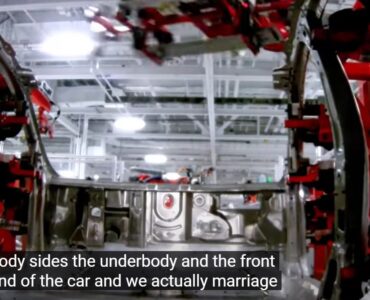by Ivan Andrianko
Creating videos in multiple languages is one of the most underestimated opportunities when producing video content.
It helps broaden your video’s reach, and allows your entire audience access to the asset – usually for only a small additional marginal cost. It’s one of the best ways to maximize the impact of your existing asset without having to create new ones from scratch.
To get this done, there are a few different approaches, each with its own advantages and disadvantages.
To start though, let’s quickly discuss some cases in which you would need to create video assets in a variety of languages.
When to use multilingual videos?
Most often video content is created in only one language – that of the intended audience. And usually by default this is English. But as content around the web surges and video marketers want to reach a broader audience, further video translation services are becoming more and more relevant.
Some common use cases for wanting to use multilingual video include:
- Ad campaigns: In order to get higher engagement and lower spend, many agencies will create HUNDREDS of variants of their ads for the different localized markets that they serve. The savings on this can be huge.
- E-learning or product training: Imagine that you’re a company operating in 50+ countries, doesn’t it make sense to use the same asset by changing the language instead of creating it 50 times?
- General accessibility: For many NGOs or government organizations, respecting language laws means that many content assets by law must be produced in multiple languages at once.
From experience creating multilingual videos we find that most customers fit into one of these use cases.
Now the question is – what’s the best approach to actually getting your video produced in different languages?
Subtitles – the cheapest way to translate a video
With subtitles you aren’t actually changing the content of the video. Instead, you’re simply taking the existing asset and layering a subtitle track on top, usually using an SRT file. An SRT file is just a text file with information about where and when the subtitles should come up, and what they should say. It’s a very basic approach but extremely cost-effective, since no actual edits to the video’s audio or video need to be done.
If you’re really on a budget, you can even add subtitles for the text elements in your videos. Going and editing the original videos can be expensive and time consuming. But since you’re already creating a SRT file, it can be simpler to just add in a translation of the on-screen text.
Dubbing – for a premium multilingual video experience
Dubbing a video means replacing the original voice tracks with voiceovers in the target language.
It helps create a more immersive viewing experience, but it involves considerably more work.
Dubbing a video in a new language involves:
- Translating the original script into the new languages
- Recruiting and recording voiceover artists for the new languages
- Syncing the voiceover with the video
- Reviewing the synced dub, and revising the script if any words appear to disconnected from the actors’ mouth movements
- Re-recording the voiceover and re-syncing it with the video
- A final review to make sure the dubbing looks natural enough
This means a lot of additional work for the animator or video editor to sync the scenes. Sometimes this requires creative solutions, or just accepting that some parts will be “strange” – as in, they won’t flow like the original.
So what’s the best way for you?
You need to look at what’s more important to you
- For cost savings – subtitles will do the trick at a lower cost
- For quality – dubbing is the way to go, but will cost more
In the end both are valid ways of translating the video and it really depends on the brand experience you want to offer to viewers. Often internal content is held to a lower standard than external facing content, and it’s factors like this which will influence the overall decision of which direction to go.
Regardless of your path forward, one thing is certain – translating your video will be more cost effective than making a fully new one.
About the Author
 Based out of San Francisco, Ivan Andrianko is the owner of Rocketwheel. He’s been living and breathing all things video since 2007. When he’s not fine-tuning the team’s latest production, you can find him in his woodshop perfecting his craft, or out exploring in the Santa Cruz mountains.
Based out of San Francisco, Ivan Andrianko is the owner of Rocketwheel. He’s been living and breathing all things video since 2007. When he’s not fine-tuning the team’s latest production, you can find him in his woodshop perfecting his craft, or out exploring in the Santa Cruz mountains.





